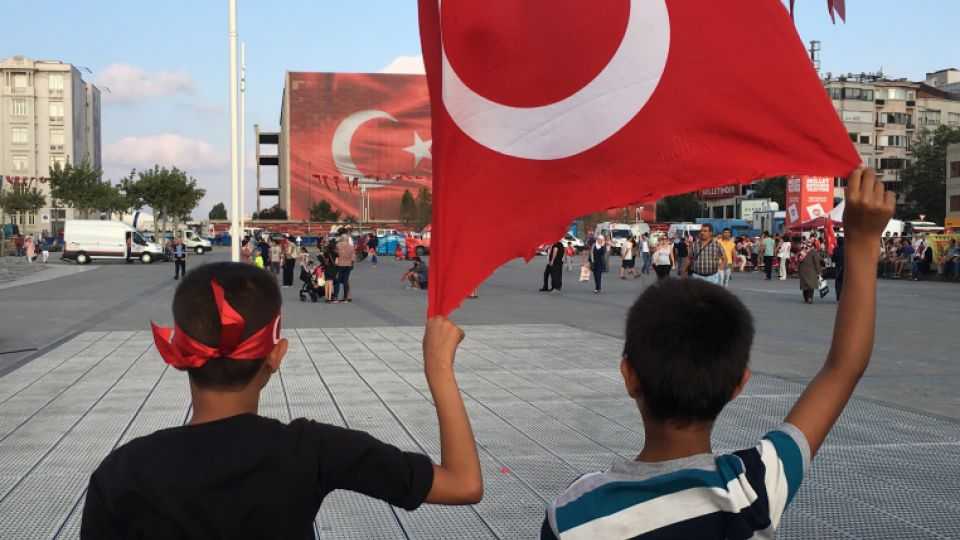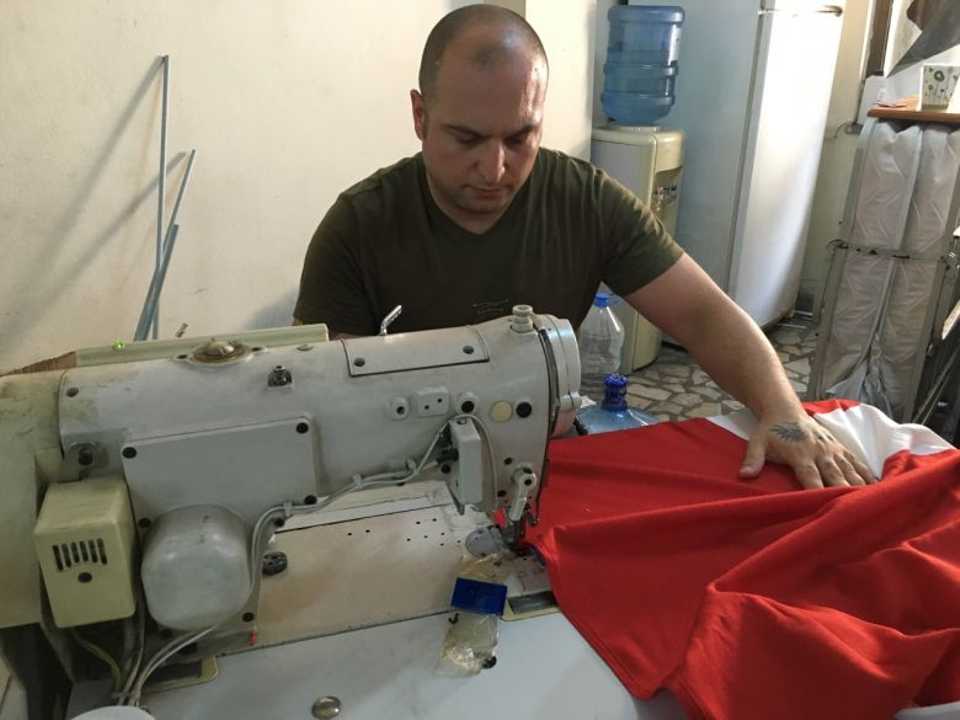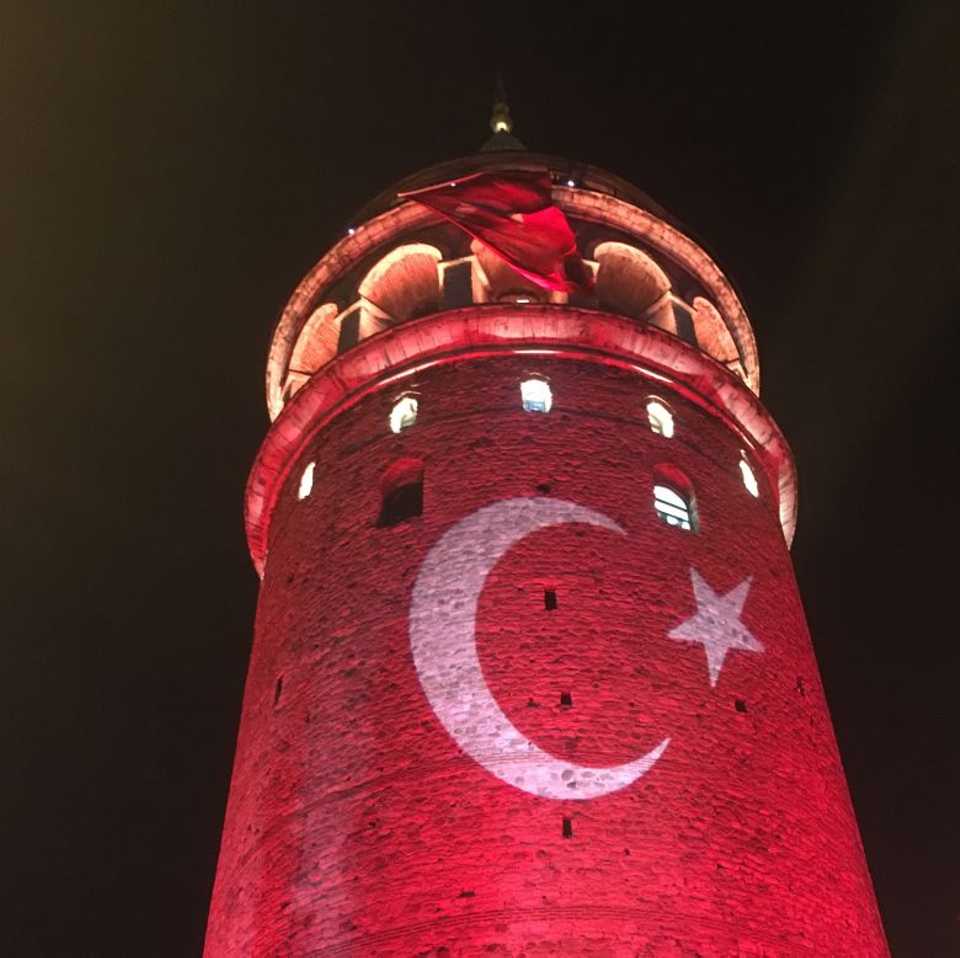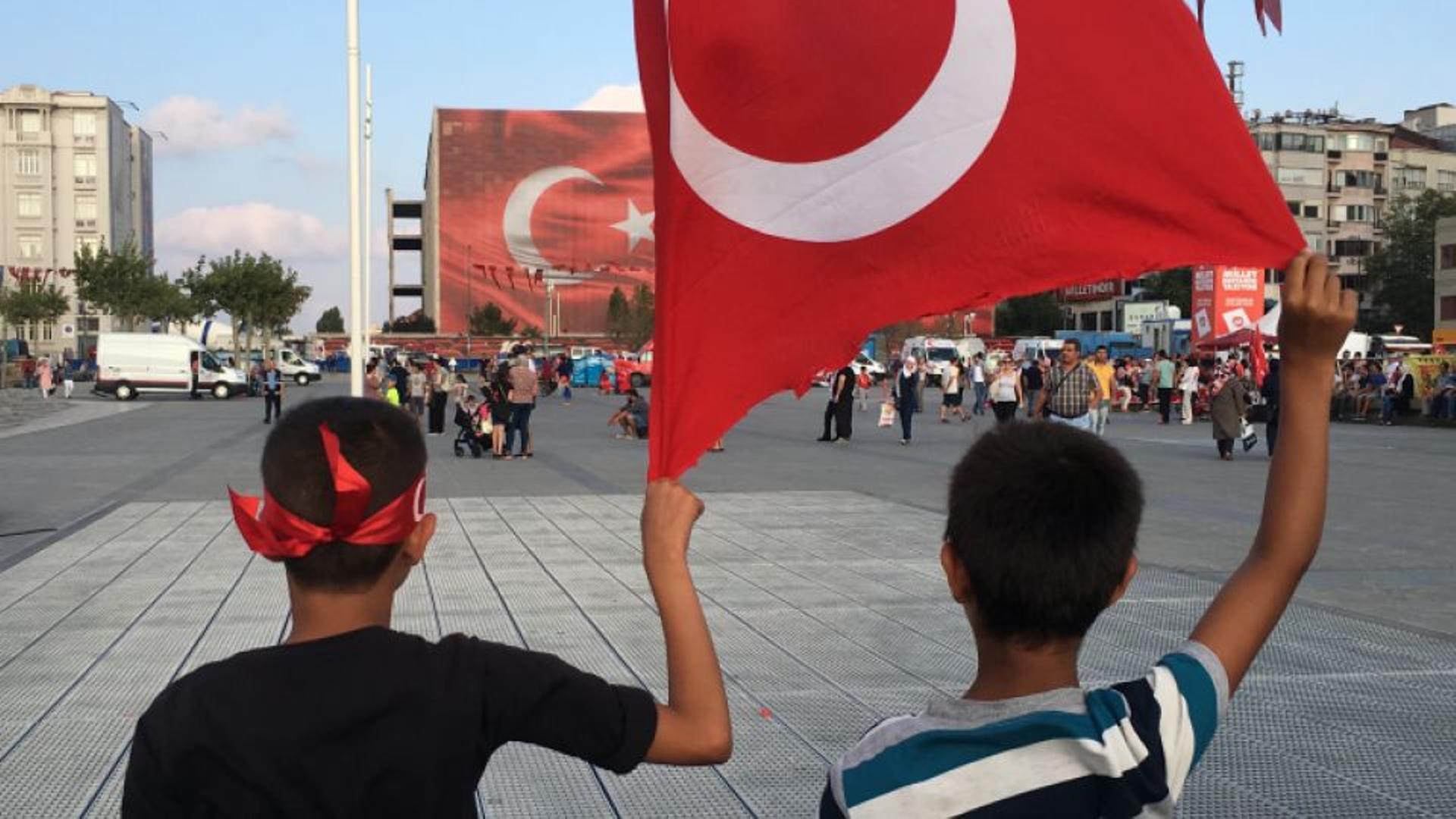
When Oktay Yeşilbaş arrived at his flag shop on the morning of Saturday, July 16, his mind was reeling from the historical events that had transpired only hours prior.
In the course of one night, the country had gone from once again facing the possibility of life under military rule to an unprecedented display of unity as mass gatherings of people pushed back against an attempted military coup.
Looking back on that night, there was one thing that caught his attention: the flags. Amidst the sea of people were vivid splashes of red, as the Turkish flag waved in the hands of those who gathered in defiance of their would-be military rulers.
“We were protecting our nation,” he said of the crowds gathered at the Bosphorus Bridge in the early morning hours of July 16.
Standing face-to-face with soldiers — guns in hand and tanks at the ready — Yeşilbaş found himself thinking: “I may be martyred this night.”
His fear was not unfounded. By the night’s end, more than 200 people — including alleged coup plotters — would be killed, thousands more left injured. In an eerie harkening to the original vision of the flag — said to depict a celestial reflection on a pool of martyrs’ blood — many of the dead and wounded would be wrapped in the Turkish flag.
To Yeşilbaş, the crowds and the flags they carried were a remarkable display of people power. In a nation with a long history of celebrated military upheavals, this time, the flags were a symbol of opposition to the military — a sign of how much Turkey’s democracy, and populace, has matured.
Throughout the country, hundreds of thousands of people joined together to state unequivocally that they would not accept yet another military putsch.
The city glows red
The most “unbelievable” part came when Yeşilbaş arrived at Gonder Bayrak, his store in Umraniye, early Saturday morning. He found himself flooded with orders for the Turkish flag. Before the week’s end, he had produced and sold more than 100,000 flags. The demand was so high that he completely depleted his own supply and eventually had to turn to the unsold stocks of his competitors to fulfill the orders.
“Think about it, we have 78 million people in this country and 40 million wanted to buy flags.”
According to local media reports, that number could actually be as high as a 100 million flags sold in 10 days.
As the days wore on, Turkish flags began to appear everywhere. Private residences, commercial buildings, historical landmarks and even Istanbul’s famous bridges were adorned with red flags. In the ensuing weeks, flags of various sizes began to appear throughout the country. Electronic signboards projected the image of the white star and crescent against a red background. Buildings on the banks of the Bosphorous were adorned with mammoth banners. Even the bricks of the famous Galata Tower were illuminated in red.
Yeşilbaş said all of the flag producers in the nation — numbering in the thousands — had trouble executing the sudden rush of orders. In the first week, some were churning out upwards of 100,000 flags each day. The demand was so high that he even sold flags that would usually be discarded for not passing quality control.

Orkun Altier, who has been in the flag business since the age of ten, faced similar difficulties in trying to fill orders.
Altier, who learned the trade from his father, says he was only able to deliver 60 per cent of the 45,000 flags he was asked to provide within the first five days of the coup. “For the people, the flag became a weapon,” aimed directly at the coup plotters, said Altier.
Poor timing
The patriotic fervor should have been a boon for the nation’s flag producers, but Altier says luck was not on their side. “It was the summer, when most of the workers in our factories are out. The fact that [the coup attempt] was during the weekend made it even more difficult.”
Meanwhile, short-staffed and inundated with orders, Yeşilbaş said he slept no more than two hours between Saturday and Sunday.
Altier estimates that 1.5 million flags were sold on July 16 alone.
All of the flag producers agree that the post-coup sales surpassed even the days after Turkey’s football team made it into the World Cup semifinals in 2002.Sales may have been brisk, but the fact that the sudden uptick in flag sales was the direct result of an attempted coup led to a moral dilemma.
“How can I charge people extra when the flag became a symbol of democracy?” Altier said.
Yeşilbaş said he too took a moral stance and refused to raise his prices. “There were profiteers selling the same flags for 100, 200, even 1,000 Turkish liras.”
Altier uses the 30-45 metre cloth flags he was asked to produce for demonstrations in Taksim Square as an example. The flags, which were requested by organisers of the daily rallies in the iconic square, cost 6,250 liras to produce, he sold them for 7,250 liras. “This was about patriotism, flags are sacred in Turkey,” Altier says, explaining he maintained the same profit margins he’s always kept.
That sanctity, said Yeşilbaş, cannot be denied. “It’s similar to kissing bread after it falls to the ground. In Islam, we see bread as one of the most important things, it’s the same when it comes to the Turkish flag.”
Selling nationalism
Flag makers may not have raked in the kinds of profits people imagined, but they insist one group did, flag sellers.
By Saturday evening as millions of people began to gather in public squares across Istanbul, Ankara, Izmir, and other cities, many of the nation’s unemployed found a new source of income in flag sales. In neighborhood squares people began trading in the symbols of Turkish nationalism. Tables filled with flags, keys and scarves with images of Erdogan, and the traditional red fez emblazoned with the country’s name were stationed throughout the gathering grounds.
Whereas many flag producers couldn’t bring themselves to raise prices, the sellers were making up to 100 per cent profit margins.

“Whatever is popular at the time, that’s what they sell,” said Altier.
Both Altier and Yeşilbaş — who usually deal wholesale — said by Saturday afternoon they were being approached by individual buyers. Most were seeking flags for personal use, but others came to buy hundreds of flags at a time.
Yazgin Özmen, who was in the textile business by trade, began selling flags at Taksim Square the day after the coup attempt. In the weeks since, he alone has sold thousands of flags. “I was selling at least 400 flags a day in the beginning, now it’s maybe half that amount.”
However, Özmen, who subsidised his textile salary by selling one-lira bottles of water at the square, downplays his profit margin of 50 per cent per flag. “I buy each flag from wholesalers for 10 liras and sell them for 15,” he said.
That daily profit — at least 2,000 liras at the height of the post-coup fervor — may not be sustainable over time, but it does represent a marked, if temporary, improvement over the average monthly income of 1,512 Turkish liras. With unemployment in the country estimated to be at least 10.3 per cent, even short-term profits present a rare opportunity for Özmen and others, who rely heavily on the tourism industry.
Unfortunate timing may have kept the flag producers from record-high profits, but to the sellers in the squares, flag sales offer a rare opportunity at a particularly grim time.
Over the last year, violent attacks (including suicide bombings) and the attempted coup have led to a severe downturn in tourism. The situation is expected to get even worse. The Ministry of Culture and Tourism predicts that the number of international visitors is expected to drop by 47 and 53 per cent in July and August, respectively.
With a grim outlook ahead, the flag sales offer a much-needed economic respite for people whose livelihood would otherwise be greatly affected by the year-long decline in tourism.
Still, both producers and sellers said their love for the nation supersedes any potential financial gain that may come from the post-coup nationalism.
This was “a psychological war and the flag was a manifestation of the people’s determination,” Altier said.
Author: Ali M Latifi and Bilge Kotan










Discussion about this post